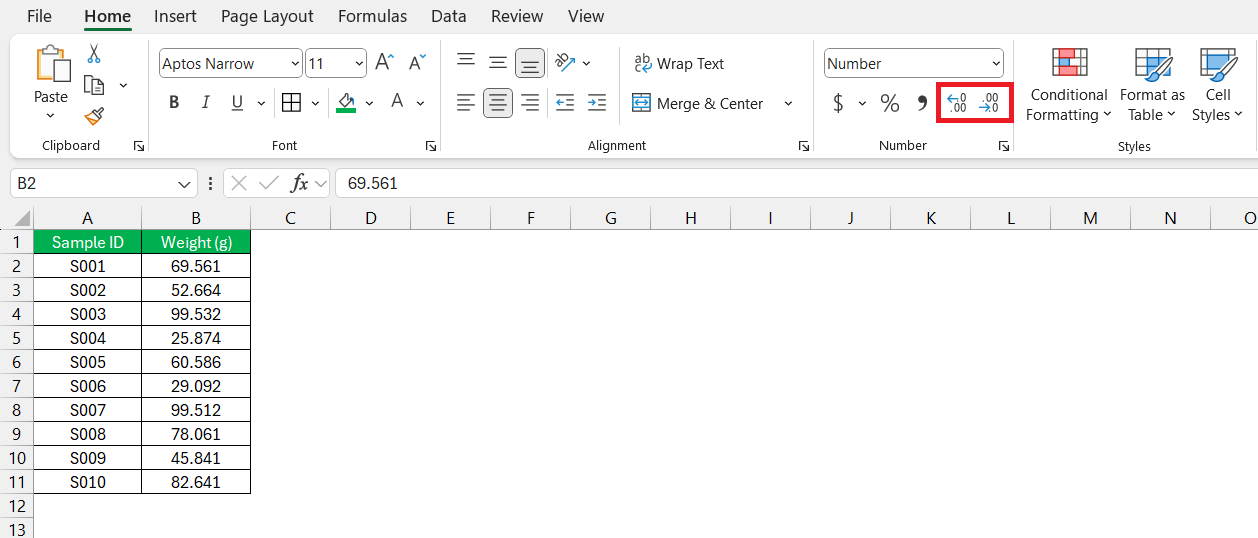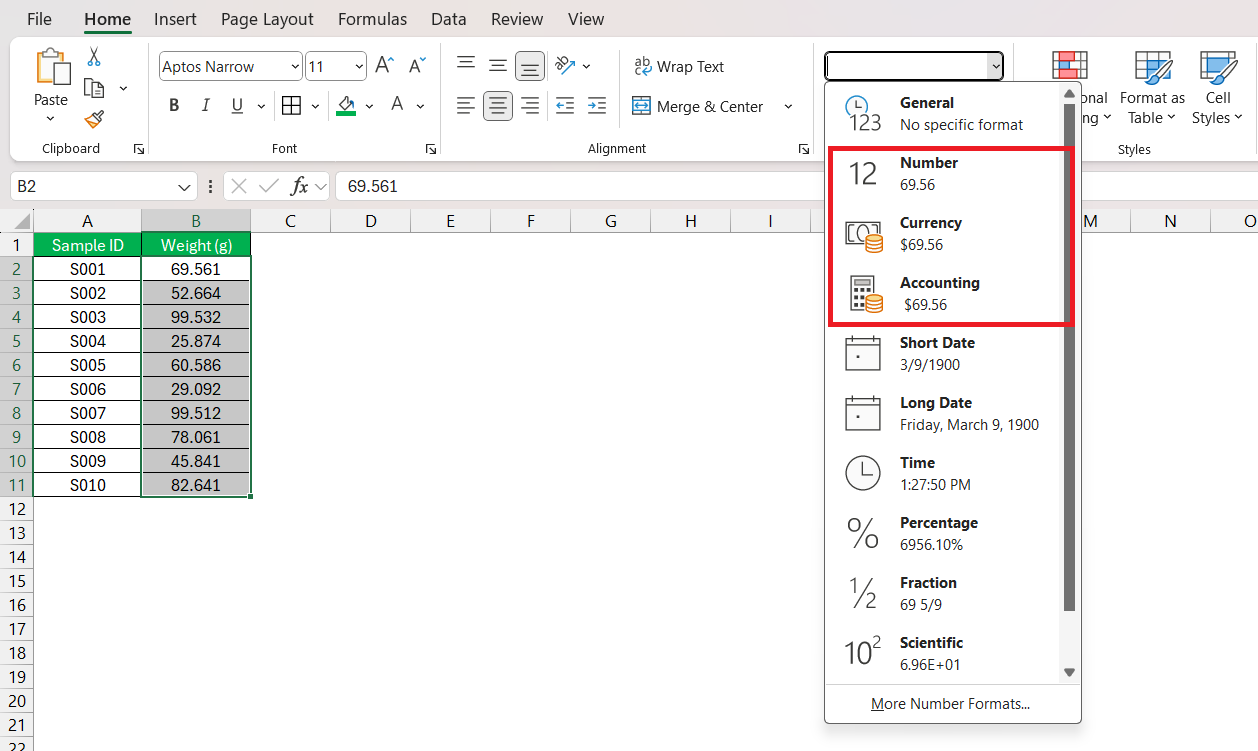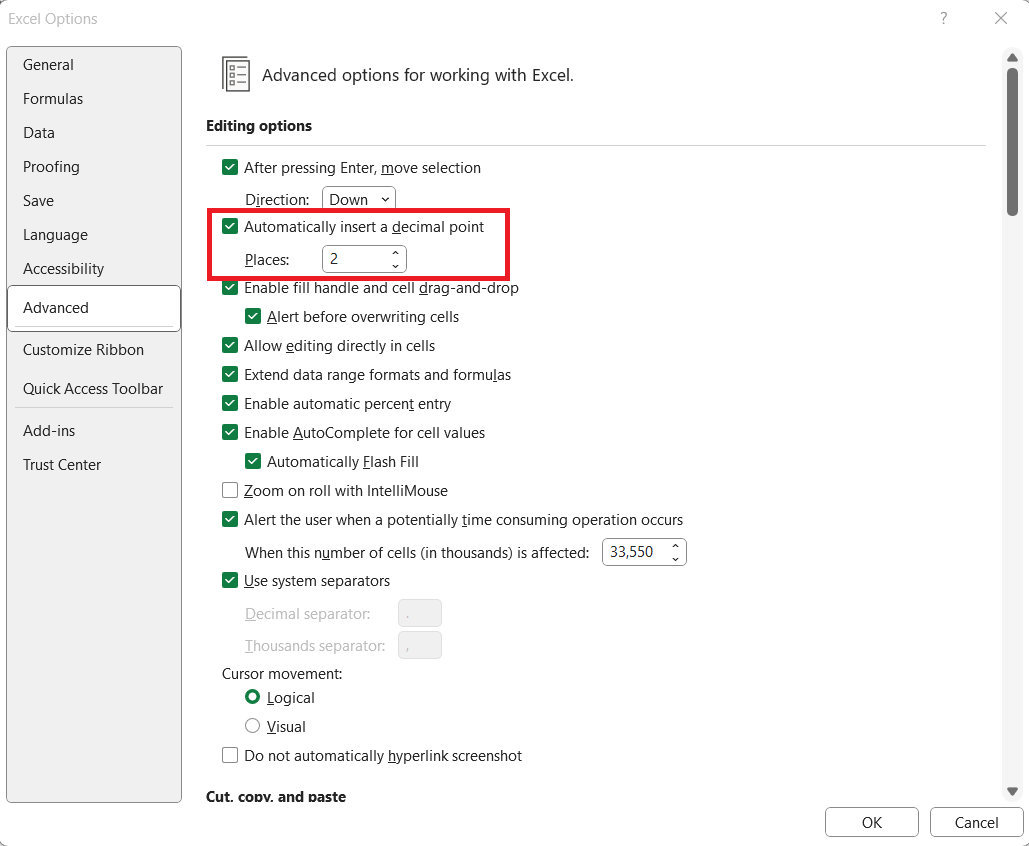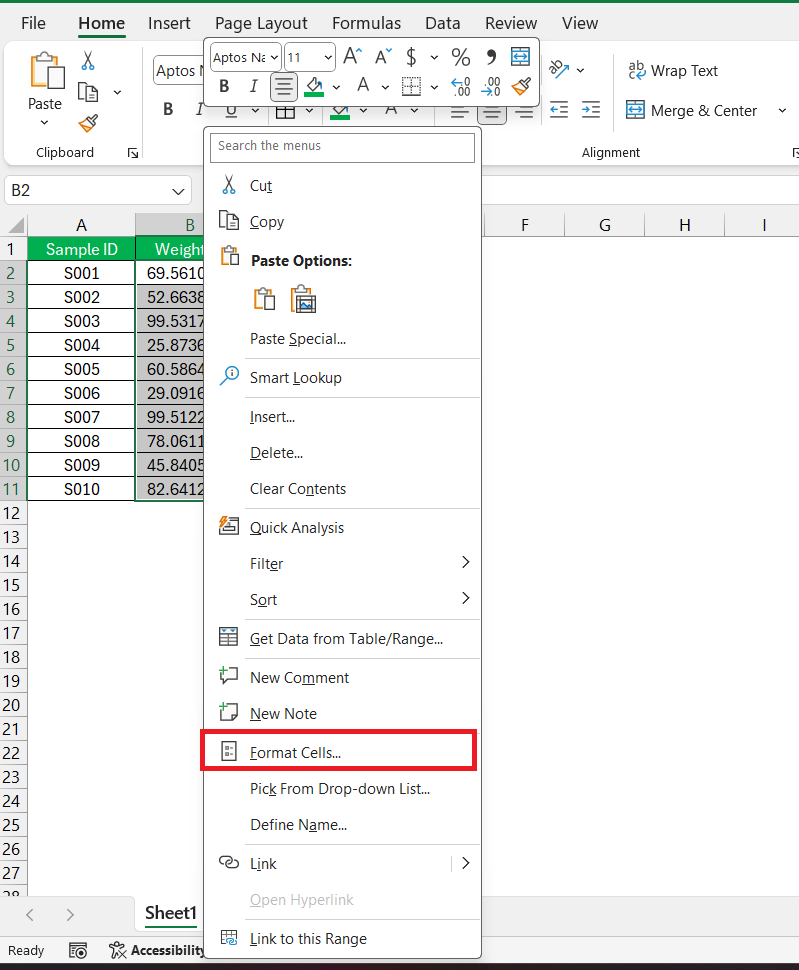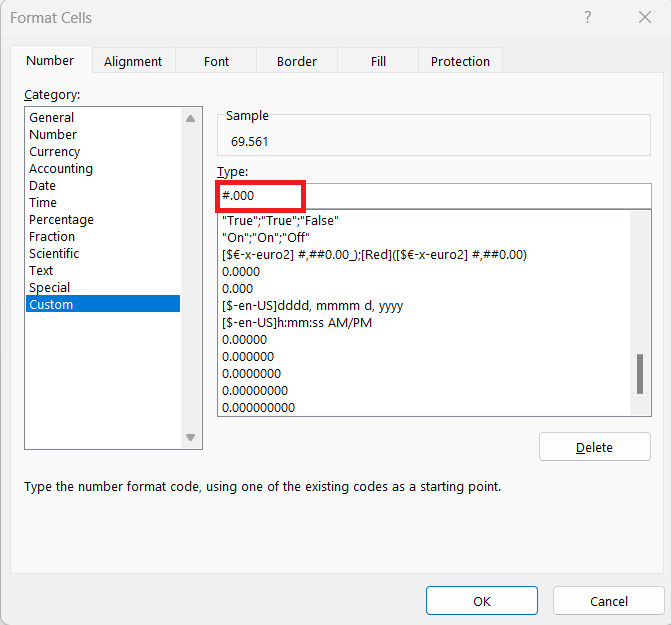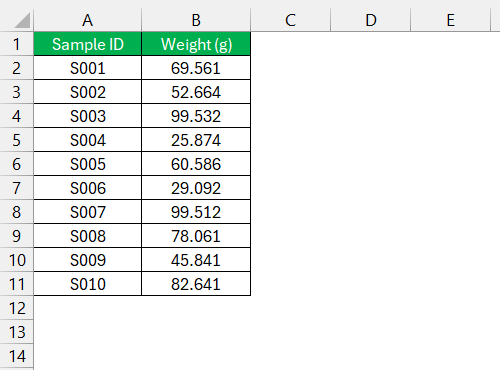When working with numerical data in Excel, there are often times when you need to add decimals—whether you’re managing financial data, calculating precise measurements, or analyzing statistical information. I’ve found Excel to be incredibly user-friendly for such tasks, and I’d like to walk you through how to add decimals step-by-step.
Key Takeaways:
- Excel ensures accurate decimal representation, crucial for financial, statistical, or scientific data.
- Use the “Increase Decimal” and “Decrease Decimal” buttons for quick precision changes.
- Apply Excel’s built-in or custom number formats to standardize decimal presentation across datasets.
- Avoid mistakes like rounding issues by double-checking cell formats and using functions like ROUND.
- Save time with keyboard shortcuts like
Alt + H + 0/9for instant decimal adjustments.
Table of Contents
Introduction to Excel Decimal Precision
The Importance of Accurate Decimals in Data Analysis
Accurate decimals in data analysis are paramount, particularly when constructing financial reports or scientific measurements, where every decimal point might reflect significant values. In financial contexts, precise currency values can influence investment decisions and earnings reports; similarly, in science, measurement exactness can affect experimental outcomes.
Microsoft Excel caters to this critical need through features that allow users to fine-tune decimal precision, ensuring data portrays a true reflection of the figures intended.
Simplifying Decimals in Excel
Using the Increase Decimal and Decrease Decimal Buttons
Manipulating decimal places in Excel is straightforward with the “Increase Decimal” and “Decrease Decimal” buttons. Let’s say we have to refine the precision of specific data points. I would select the cells in question and then, on the Home tab, I could either increase the number of decimal places to add more detail or decrease them for a more general view.
Each click adjusts the decimals by one place, making it almost effortless to align my data’s display with my analytical needs.
Moreover, this immediate visual feedback allows me to spot-check for accuracy or gain a clearer understanding of trends or patterns, which is particularly beneficial when working with large sets of numbers that require fine-grain control over decimal display.
Applying a Built-In Number Format for Common Decimal Requirements
When dealing with common decimal requirements, Excel’s built-in number formats come to the rescue. After selecting the relevant cells, I can easily access and apply formats such as Currency, Accounting or Number by using the drop-down menu in the Number group on the Home tab.
Each of these predefined formats comes with its own set of decimal precision standards that suit typical scenarios in financial statements, statistical analyses, or data reports.
This functionality is not only a time-saver but also adds a uniform, professional look to the data, which is vital when sharing documents with stakeholders or team members. Plus, it reduces the chance of errors that might come from manual entry, thereby upholding the data’s integrity.
Advanced Techniques to Add Decimals
Set a Default Decimal Places Number for Consistency
Consistency is key in any dataset, and Excel lets me set a default decimal places number across the entire worksheet, or even a workbook, ensuring uniformity without the need for repetitive adjustments. To do this, I go into Excel’s options. Under the Advanced tab, there’s an ‘Editing options’ section where I can check the “Automatically insert a decimal point” box and set the desired number of decimal places.
This setting means that whenever I type in numerical data, Excel will automatically format it according to the preset decimal places, saving me the hassle of manual formatting. This is especially beneficial when entering a stream of numbers, allowing me to focus on the data itself rather than formatting concerns.
Tips for Efficient Decimal Management
Format Cells to Show Fixed Number Length after Decimal Point
To show a fixed number length after the decimal point in Excel, I rely on cell formatting. This establishes a consistent presentation style regardless of whether the actual number has fewer or more decimal places. Here’s how it works: I select the cells to format, right-click, and choose ‘Format Cells’ from the context menu.
Within the Number tab, I select ‘Custom’ and then enter the desired format, such as ‘#.000’ for three fixed decimal places.
This feature is invaluable for achieving a uniform look in reports and data sheets, ensuring that all numerical data aligns neatly and is instantly comparable.
For accuracy and visual ease, this method is a go-to for organizing data that requires standardized precision.
Common Challenges and Solutions
Rectify Common Missteps When Dealing with Decimals
Rectifying common missteps when dealing with decimals is vital to maintaining the integrity of my Excel spreadsheets. Mistakes like incorrect decimal placement or inconsistent precision can skew data and lead to inaccurate conclusions. One frequent error occurs when decimals are inadvertently rounded, either through manual entry or by not setting the appropriate cell format. To address this, I double-check my cell formats and apply the correct decimal precision.
Another oversight involves neglecting to match the decimal precision of raw data with the output in formulas or functions, which can be solved by using ROUND functions or setting a consistent custom format across cells. Keeping an eye on these potential pitfalls allows me to minimize errors and ensure that my data is as accurate and meaningful as it should be.
Excel Decimal Best Practices
Save Time with Shortcuts and Tricks for Decimal Entry
To save time with decimal entry in Excel, I’ve mastered a few shortcuts and tricks. For instance, Excel’s efficiency shines with the Alt + H + 0 shortcut, which instantly increases the decimal places, and its counterpart, Alt + H + 9, decreases them. These keyboard shortcuts are game-changers when working through extensive spreadsheets, as they allow for rapid adjustments without taking my hands off the keyboard.
Another trick I commonly use is the Excel flash fill feature, which recognizes patterns in my data and automatically fills in the decimal formatting for new entries. This intelligent function can be activated by typing a couple examples of the desired format and then pressing Ctrl + E.
It’s these sorts of shortcuts and features that streamline my experience, enabling me to work smarter, not harder, when inputting and formatting decimal-heavy data.
By incorporating these shortcuts into my workflow, I significantly reduce the time spent on formatting, which frees me up to focus on the more analytical aspects of my work.
Enhance Precision & Avoid Errors in Financial Models
Enhancing precision and avoiding errors in financial models is non-negotiable for me. Excel’s various functions and formatting capabilities play a pivotal role here. It starts with ensuring that all inputs, like interest rates or financial ratios, adhere to the required decimal places for accurate calculations. I utilize cell formatting to automatically include this precision level, employing either built-in or custom formats.
To further avoid errors, I scrutinize all formulas to confirm they reference the correct cells and use functions like ROUND to control the decimal places in my outcomes. Data validation is another tool in my arsenal, restricting inputs to a specific range or type, and mitigating the risk of erroneous data entry that could throw off an entire model.
Furthermore, Excel’s auditing tools help me trace and monitor formulas, ensuring they work as intended. By taking these precautions, I maintain the integrity and accuracy of my financial models, ensuring they’re a reliable decision-making aid.
Careful attention to these details isn’t just best practice—it’s a critical component in the reliability and credibility of financial analysis and reporting.
FAQ: Perfecting Your Excel Decimal Skills
How do I add decimals to numbers in Excel?
To add decimals to numbers in Excel, select the cells you want to format, then use the ‘Increase Decimal’ toolbar button to show more digits after the decimal point. Alternatively, create custom formats or use the ‘Text to Columns’ wizard to specify fixed decimal places for existing numbers.
How to sum decimal numbers in Excel?
To sum decimal numbers in Excel, use the SUM function, such as =SUM(A1:A10), where A1:A10 is the range containing the decimals. Ensure cells are formatted correctly to display the desired decimal precision.
Can I set a universal standard for decimal places in all Excel spreadsheets?
No, setting a universal standard for decimal places across all Excel spreadsheets simultaneously isn’t possible. Decimal places are controlled at the workbook or worksheet level within individual Excel files.
How can automatic decimal insertion improve data entry efficiency?
Automatic decimal insertion improves data entry efficiency by saving time and reducing input errors. You type numbers without a decimal, and Excel formats them into a consistent decimal form as per your settings.
How do you format a number in Excel so the decimal appears in a specific spot?
In Excel, format a number so the decimal appears in a specific spot by creating a custom number format. Go to Format Cells > Custom, and type the desired pattern, for example, “0000.00” to place a decimal after the fourth digit.
John Michaloudis is a former accountant and finance analyst at General Electric, a Microsoft MVP since 2020, an Amazon #1 bestselling author of 4 Microsoft Excel books and teacher of Microsoft Excel & Office over at his flagship MyExcelOnline Academy Online Course.

